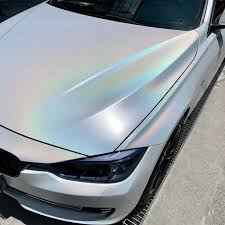Advantages and disadvantages of White Vinyl Wraps and application guide
White Vinyl Wraps have become increasingly popular for vehicles, furniture, and other surfaces due to their sleek appearance and versatility. However, like any material, they come with their own set of advantages and disadvantages. Here’s a closer look at the pros and cons of white vinyl wraps, along with a brief guide on how to apply them effectively.
Advantages of White Vinyl Wraps
1. "Aesthetic Appeal"
White vinyl wraps provide a clean, modern, and sophisticated look. They are ideal for those seeking a minimalist design or a professional finish.
2. "Cost-Effective"
Compared to a full paint job or other permanent solutions, vinyl wraps are relatively affordable. They allow you to achieve a high-end appearance without breaking the bank.
3. "Protective Layer"
Vinyl wraps act as a protective shield for the surface underneath, safeguarding it from scratches, UV rays, and minor abrasions.
4. "Customizable and Removable"
One of the biggest advantages is their flexibility. If you wish to change the design or revert to the original surface, the wrap can be removed without causing damage.
5. "Easy Maintenance"
Cleaning a white vinyl wrap is simple. Regular washing with mild soap and water can keep the surface looking pristine.
Disadvantages of White Vinyl Wraps
1. "Prone to Stains"
White wraps are more susceptible to dirt, stains, and discoloration compared to darker colors. They may require frequent cleaning to maintain their appearance.
2. "Durability Concerns"
While vinyl wraps are durable, they are not as long-lasting as paint. Over time, exposure to harsh weather conditions may cause peeling or fading.
3. "Installation Challenges"
Applying a vinyl wrap requires precision and skill. DIY attempts without proper tools or experience may result in air bubbles, creases, or an uneven finish.
4. "Limited Lifespan"
Depending on the quality of the material and maintenance, vinyl wraps typically last 3–7 years, which may not be ideal for those seeking a long-term solution.(Candy Car Wrap)
Application Guide for White Vinyl Wraps
1. "Preparation"
Clean the surface thoroughly to remove dirt, grease, and debris. Any imperfections on the surface can affect the final result.
2. "Measure and Cut"
Measure the area you want to cover and cut the vinyl wrap accordingly, leaving a small margin for adjustments.
3. "Apply the Wrap"
Peel off the backing and carefully place the wrap on the surface. Use a squeegee or similar tool to smooth out air bubbles and wrinkles as you go.
4. "Trim Excess Material"
Once the wrap is applied evenly, use a sharp blade to trim any excess material around edges or corners.
5. "Seal the Edges"
Use heat (from a heat gun or hairdryer) to secure the edges of the wrap and ensure it adheres properly.
6. "Final Inspection"
Check for any remaining imperfections and make adjustments as needed.
Conclusion
White vinyl wraps offer an excellent way to enhance the appearance of vehicles or surfaces while providing protection. However, they require proper care and maintenance to retain their aesthetic appeal. By weighing the pros and cons and following an accurate application process, you can achieve professional-looking results with ease. Whether for personal use or business purposes, white vinyl wraps are a versatile choice worth considering.



